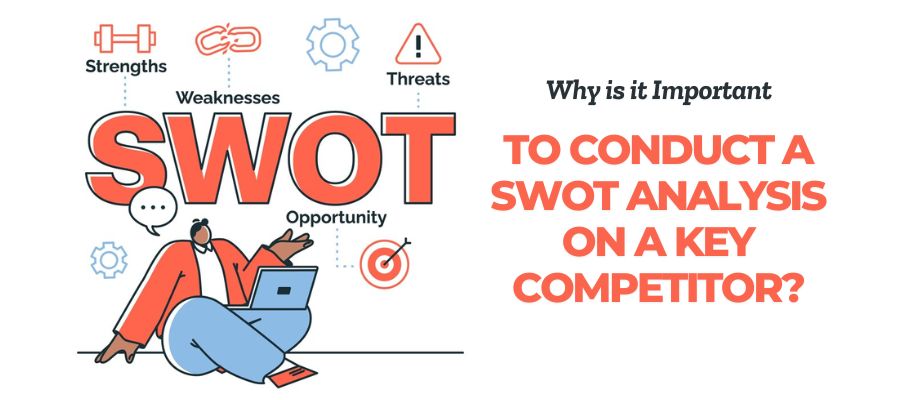What is a Swot Analysis
A SWOT Analysis is a powerful strategic planning tool used by organizations to assess Strengths, Weaknesses, Opportunities, and Threats. This analytical framework provides insights into both internal and external factors that can impact an organization’s goals. Developed as a part of corporate planning by Albert Humphrey, SWOT Analysis has become one of the most widely used frameworks for business development and strategy.
Importance of Conducting a SWOT Analysis
Conducting a SWOT Analysis allows businesses to evaluate their current state and make informed decisions. By identifying strengths, businesses can capitalize on what they do best, while understanding weaknesses helps them pivot and improve. The analysis also highlights potential opportunities and threats in the market, enabling businesses to adapt to trends and remain competitive. For business owners, a SWOT Analysis serves as a useful tool to grow their companies by aligning objectives with actionable strategies.
Overview: When is the Best Time to Conduct a SWOT Analysis?
Timing is essential when conducting a SWOT Analysis. Typically, businesses perform a SWOT Analysis during the strategic planning process. However, it can also be useful during times of organizational change, market shifts, or when launching new products and services. Regularly assessing the business landscape with SWOT Analysis ensures that strategies remain aligned with market trends, demographics, and other external forces. Here are some ideal moments for When is the Best Time to Conduct a Swot Analysis:
A. At the Start of a New Project or Business
Performing a SWOT analysis early in a new project or business helps identify potential opportunities and risks right from the beginning. It offers clarity on your strengths and weaknesses and sets a strong foundation for strategic planning.
B. During Annual or Quarterly Planning
Analyzing strengths, weaknesses, opportunities, and threats can help guide decision-making for the upcoming period. Many organizations perform a SWOT before setting goals for the new fiscal year or quarter to align their strategy with the current environment.
C. When Preparing to Enter a New Market or Launch a New Product
A SWOT analysis before a market entry or product launch helps assess if your organization is equipped to succeed in the new environment. This step is critical for understanding competitive dynamics, potential challenges, and customer needs.
D. When Responding to Major Industry Changes
Significant market changes, such as new regulations, technological advancements, or shifts in consumer preferences, make it essential to reevaluate your position. A SWOT analysis during such times can highlight areas where adaptation is necessary.
E. In Times of Financial or Operational Strain
If a business is struggling financially or operationally, a SWOT analysis helps pinpoint internal weaknesses or external threats contributing to the challenges. It can also uncover untapped strengths and opportunities to leverage during recovery.
F. Following a Major Competitor’s Move
If a competitor makes a strategic move (e.g., launching a new product, entering a new market), a SWOT analysis can help determine how it affects your position and reveal potential responses.
Strategic Planning Phases
Strategic planning is a structured process that often includes SWOT Analysis. Here’s how it fits into the phases of strategic planning:
A. Role of SWOT Analysis in Strategic Planning
SWOT Analysis provides a foundation for strategic planning. By assessing strengths, weaknesses, opportunities, and threats, organizations can make smarter choices and prioritize objectives that align with their goals.
B. Timing During the Planning Cycle
Conducting a SWOT Analysis is most effective at the beginning of the planning cycle. It is the first step toward defining an organization’s strategy, providing clarity on what needs to be achieved. Revisiting SWOT periodically ensures that strategic decisions remain relevant as the business and market conditions evolve.
C. Importance of Aligning SWOT Analysis with Organizational Goals
A SWOT Analysis should be aligned with organizational objectives to ensure that the planning process focuses on achieving the right outcomes. For instance, if a company’s goal is to increase market share, the SWOT should focus on identifying competitive advantages and targeting growth opportunities that support this objective.
Also Read: What Are Two Reasons a Firm Would Use a Swot Analysis?
Response to Market Changes
Businesses operate in dynamic environments where market conditions shift due to economic trends, technological advancements, and competitor movements. Here’s how a SWOT Analysis can help a company respond to these external forces.
A. Identifying External Factors That Necessitate a SWOT Analysis
External factors like economic trends, changes in customer preferences, and new industry regulations often indicate when it’s time to conduct a SWOT Analysis. A PEST Analysis can help in identifying external factors and can be used alongside SWOT to give a comprehensive view of market conditions.
B. Situations Such as Economic Shifts, Competitive Landscape Changes, and Technological Advancements
When there are economic shifts or advancements in technology, businesses can conduct a SWOT Analysis to evaluate how these changes might create new opportunities and threats. This helps in adapting to changes quickly and making agile adjustments.
C. The Need for Agility in Business Strategy
An effective SWOT Analysis helps businesses remain agile by anticipating and preparing for possible challenges. Whether it’s a new competitor entering the market or a sudden shift in consumer behavior, companies that stay prepared are better able to respond proactively.
Organizational Changes
Internal changes, such as mergers, acquisitions, or leadership transitions, also necessitate a fresh look at the company’s SWOT Analysis. Here’s how it applies to organizational change:
A. When to Conduct a SWOT Analysis During Internal Transitions
During periods of internal transition, such as a restructuring or new leadership, a SWOT Analysis can help the organization assess how it is positioned to handle change. It ensures that strengths and weaknesses are clearly defined, allowing leaders to make better business decisions.
B. Examples of Changes: Mergers, Acquisitions, Leadership Changes, and Restructuring
For example, in a merger, conducting a SWOT Analysis provides insight into the combined company’s strengths and weaknesses. This aids in integration planning and highlights areas where the company might need additional resources to succeed.
C. The Value of Reassessing Strengths and Weaknesses During These Times
Reassessing strengths and weaknesses during transitions provides clarity on which assets to leverage and which areas need support. By identifying these factors, companies can ensure smoother transitions and retain their competitive edge.
Conclusion
A SWOT Analysis is a critical tool for any organization looking to succeed in today’s competitive market. Whether you’re a business owner evaluating market shifts, a strategist building a plan, or a leader guiding organizational change, conducting a SWOT Analysis provides the insights needed for effective decision-making. Regularly updating the analysis as conditions change will ensure your organization remains agile and well-prepared for the future.
FAQs
When is the Best Time to Conduct a SWOT Analysis?
The best time to conduct a SWOT Analysis is during strategic planning or in response to significant internal or external changes, such as market shifts, new competitors, or major organizational transitions.
Why is the Timing of a SWOT Analysis Important?
Timing is essential because it ensures the analysis is relevant to current market conditions and the organization’s strategic priorities.
Can a SWOT Analysis Be Done More Frequently Than Annually?
Yes, a SWOT Analysis can be conducted whenever necessary, especially in dynamic industries where conditions change rapidly.
What Are Some Signs That It’s Time to Revisit a SWOT Analysis?
Signs that it’s time to revisit a SWOT Analysis include new competitors, economic changes, and shifts in customer preferences. Regularly updating the analysis keeps strategies aligned with current realities.
Can SWOT Analysis Be Used Outside of Business Planning?
Absolutely. A SWOT Analysis can be applied to personal development, career planning, and project management, making it a versatile tool for various contexts beyond business.
Conducting a SWOT Analysis enables companies to capitalize on strengths, address weaknesses, and remain prepared for any external challenges, thereby promoting business growth and long-term success.





